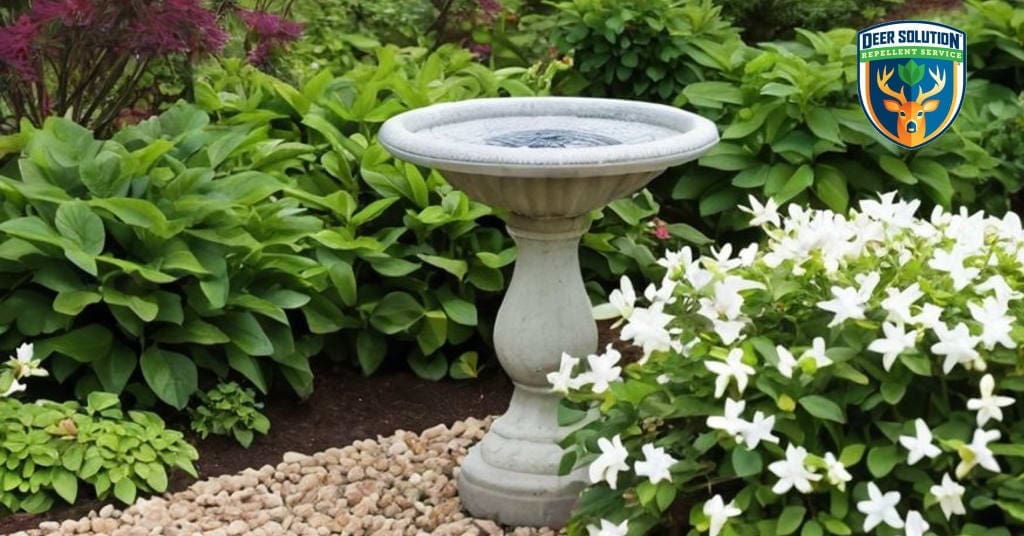Green and Golds (Chrysogonum virginianum) are a favorite among gardeners, cherished for their vibrant yellow flowers and ability to create a lush, green carpet in landscapes. These attractive ground covers not only add a splash of color but also contribute to a thriving garden ecosystem. However, a common concern for many gardeners is whether these beautiful plants are at risk from deer. Understanding whether deer eat Green and Golds and how to effectively incorporate these plants into your garden can help ensure a resilient, deer-resistant landscape.
Why Deer Avoid Certain Plants
Deer are known for their adaptable feeding habits, consuming a wide variety of plants depending on what’s available. With a diet that includes over 500 plant species, deer are highly opportunistic. However, they tend to avoid plants with specific deterrent characteristics, such as hairy leaves, strong scents, and bitter tastes. These traits make certain plants less palatable and therefore less likely to be eaten by deer. Green and Golds, with their slightly bitter taste and hairy leaves, are among the plants that deer are less inclined to browse.
Evaluating the Deer Resistance of Green and Golds
Green and Golds possess several qualities that make them less appealing to deer. Their hairy leaves and slightly bitter taste can act as natural deterrents, making deer less likely to find them appetizing. Additionally, their low-growing nature means they are less accessible to deer, who typically prefer to graze on plants that are easy to reach. While these characteristics contribute to the deer resistance of Green and Golds, it’s important to remember that no plant is completely deer-proof. During times of food scarcity, such as harsh winters or droughts, even typically avoided plants like Green and Golds may be nibbled on.
When compared to other ground covers like Vinca minor (Periwinkle) and Pachysandra, Green and Golds offer a unique combination of aesthetic appeal and resilience. While Periwinkle and Pachysandra are also popular deer-resistant choices, Green and Golds bring the added benefit of vibrant blooms that attract pollinators, making them not just a defensive choice, but also a dynamic one for enhancing garden biodiversity.
Incorporating Green and Golds into a Deer-Resistant Garden
Green and Golds can play a significant role in enhancing the aesthetic appeal and deer resistance of your garden. Here are some practical tips for integrating these plants into your landscape:
- Planting Tips: Green and Golds thrive in well-drained soil and prefer partial to full shade, making them ideal for shaded garden areas. When planting Green and Golds, space them about 12 to 18 inches apart to promote good air circulation and encourage healthy growth. This spacing can also help them form a dense mat, which may make the plants less accessible to deer.
- Companion Planting: To create a more effective garden design, consider planting Green and Golds alongside other plants such as lavender, sage, and daffodils. These plants not only enhance the visual diversity of your garden but also contribute to a multi-layered approach that makes it more difficult for deer to target specific plants.
- Layered Planting Design: Incorporating Green and Golds into a layered planting design can enhance their role in the garden. Use these low-growing plants as ground cover beneath taller, complementary shrubs and perennials. This layered approach not only adds depth and texture to your garden but also supports overall garden health by promoting diversity and resilience.
Maintaining a Healthy, Deer-Resistant Landscape
To maximize the health and resilience of your garden, it’s essential to maintain overall plant vitality. Here are some tips for keeping your landscape vibrant and less appealing to deer:
- Regular Care: Ensure that your Green and Golds, along with other garden plants, receive proper watering, especially during dry spells. Mulching around the base of the plants can help retain moisture, suppress weeds, and protect the roots, contributing to overall plant health.
- Monitoring for Deer Activity: Regularly check your garden for signs of deer presence, such as tracks or browsing damage. Early detection of deer activity allows you to take timely action to protect your plants and adjust your garden management strategies as needed.
Building a Deer-Resistant Landscape with Green and Golds
Green and Golds offer a unique combination of beauty and deer resistance, making them an excellent choice for any garden. By understanding why deer tend to avoid these plants and incorporating them into a well-designed, resilient landscape, you can create a garden that is both vibrant and less likely to be damaged by deer. Additionally, Green and Golds contribute to local biodiversity by attracting pollinators and helping to conserve soil, which enhances the overall health of your garden. For those looking to further support their garden’s deer resistance, Deer Solution provides eco-friendly services that help maintain long-term landscape health and beauty. With the right approach, you can enjoy the lush, golden blooms of Green and Golds without the worry of deer damage, ensuring a thriving garden year-round.












